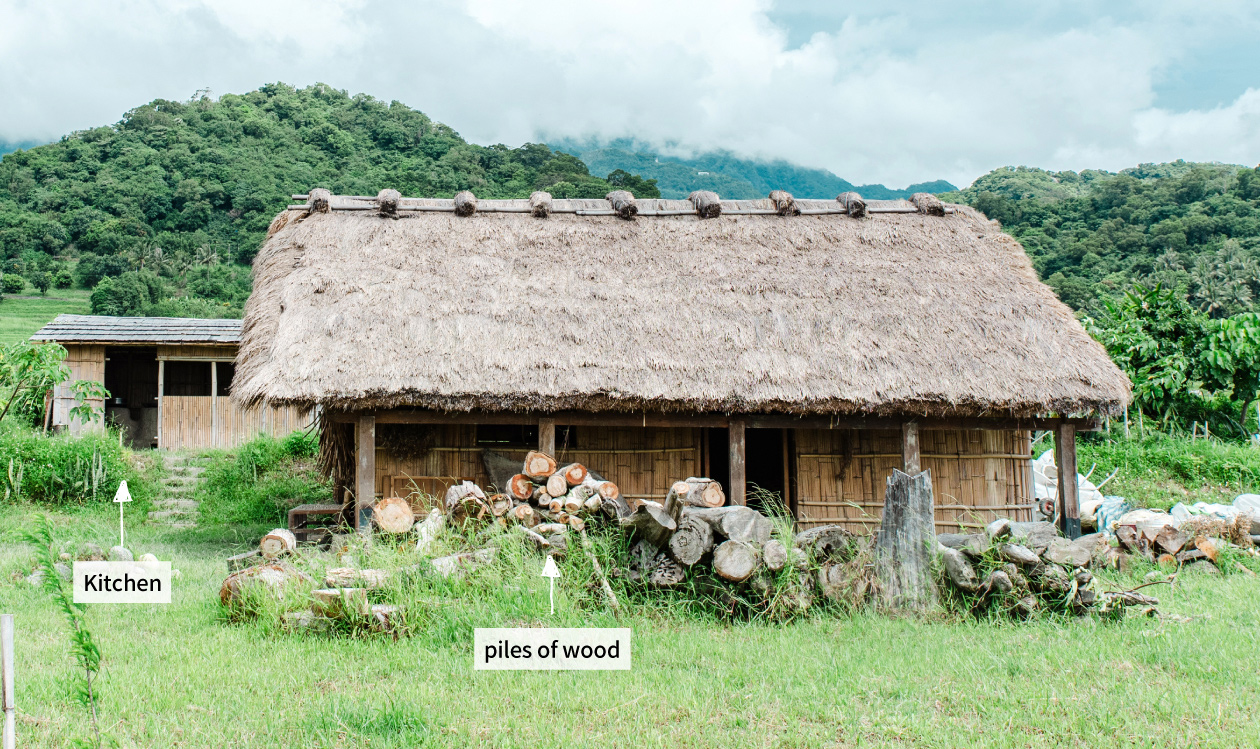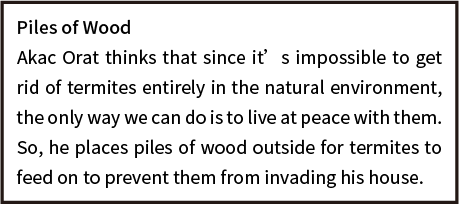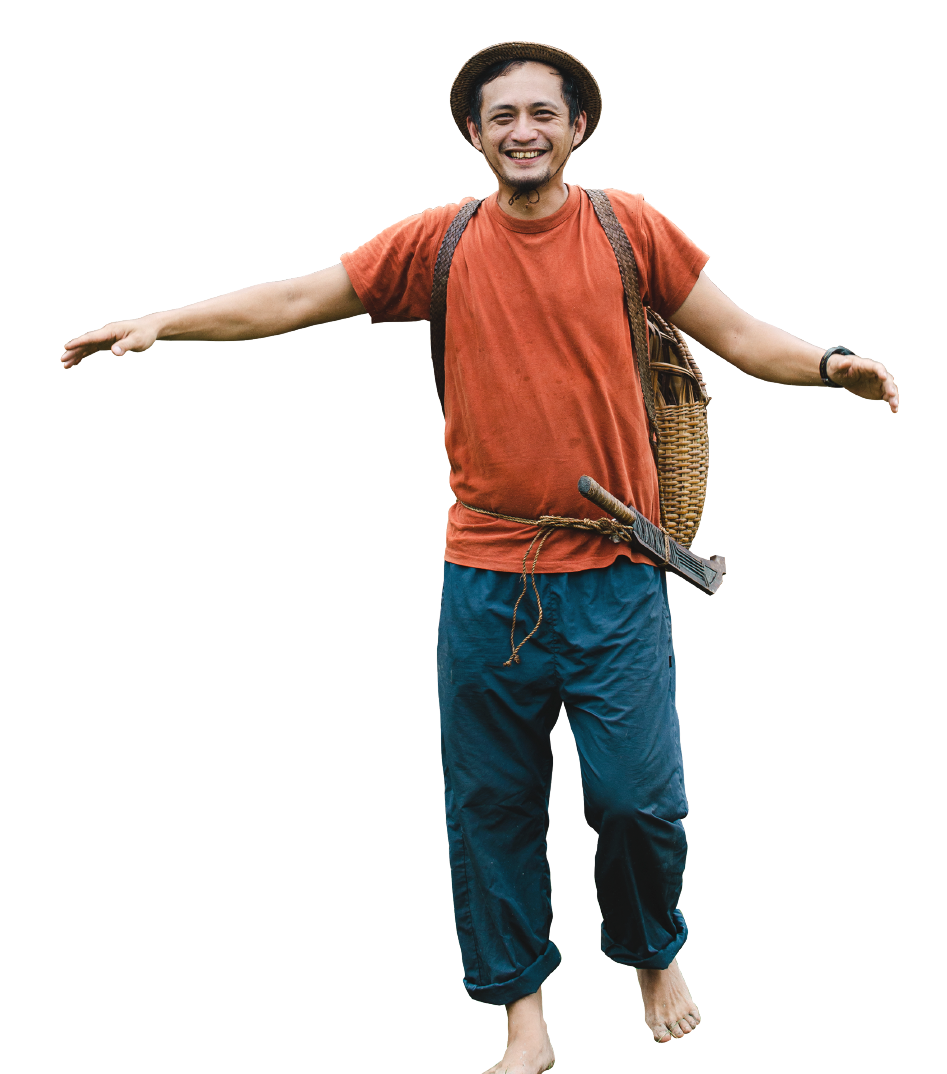
Akac Orat (Chen Hao-Yi)
Accompanied by three dogs and five cats; also raises chicken and pigs
An expert on wilderness and the Amis rattan weaving culture
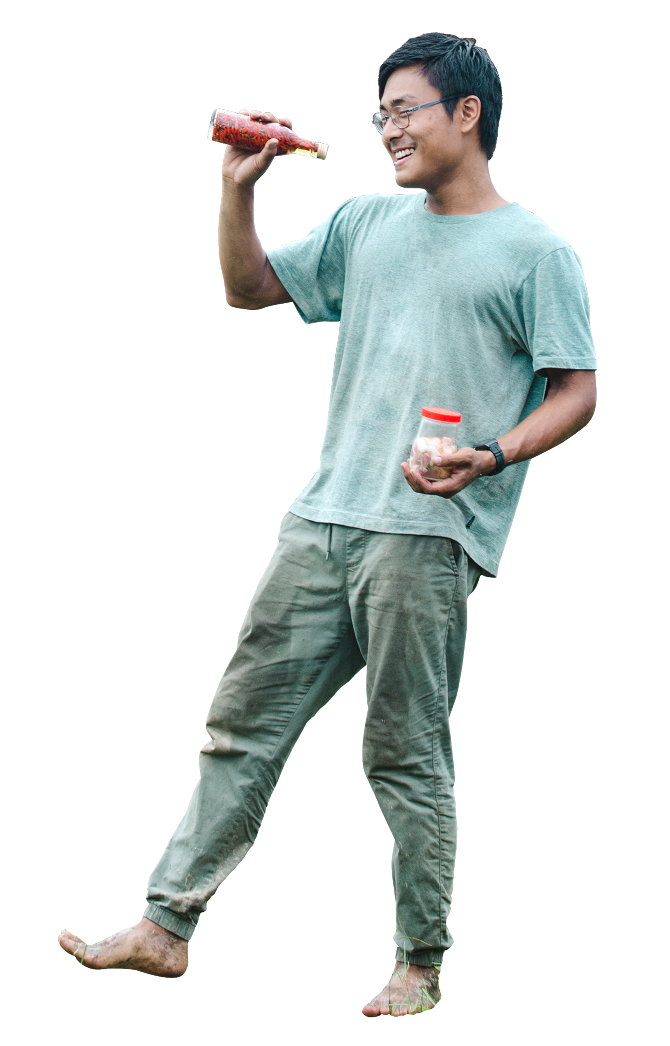
Hao-En
A Hongkonger of partly Taiwanese heritage
Have settled down in Taitung since 2018, when he served as a volunteer in Akac Orat’s traditional family house building project.
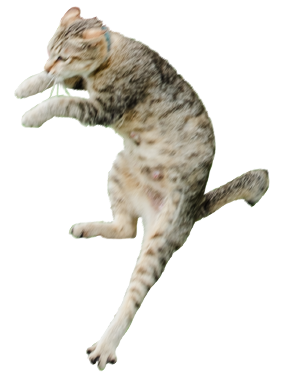
Having grown up in the Puyuma Community of the Pinuyumayan and received a series of training for age organizations, Akac Orat returned to his mother’s hometown, the Madawdaw Community of the Amis, at the age of 30. He was saddened to see the community had been Christianized, leaving no marks of its traditional culture. This inspired him to step onto the path of learning about the Amis culture from his mother’s side. He turned this aspiration into action by spending nearly seven years learning rattan weaving from local elders. Apart from making baskets, rattan is a common building material mainly used for binding the posts and beams of houses. After gaining a thorough understanding of natural materials, he decided to build a traditional Amis family house of his own.
To begin with, Akac Orat spent two and a half years preparing building materials he needed. He also recruited 600 volunteers or so to help him build the house modeled on the traditional style of more than a century ago, which took them three and a half months to finish. The house was built entirely of natural materials by hand, and the only modern tool used was the chainsaw. It was not that Akac Orat refused to adopt any convenient way of doing it, but simply because he had no time to make money for buying necessary tools, for he had thrown himself wholeheartedly into the project.
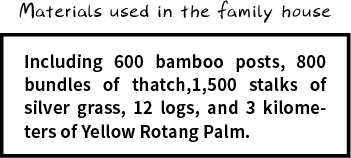
The purpose of family houses may differ for different indigenous groups. For some communities, houses are designed to be inhabited by a single family, while in the Amis society a typical family house is built to accommodate the whole clan. Embracing the idea that buildings must be built for practical use, Akac Orat made many adjustments to the house to meet his needs by scaling down the layout and placing the kitchen and a latrine hut* outside. Next, he is planning to build a pigsty and a chicken coop to replicate a traditional living environment.
Having replicated the desired living environment and ways of life, Akac Orat undergoes a fundamental change in the rhythm of his daily life, which requires him a great deal of effort to maintain. To ensure a traditional way of living, he has to check the condition of the house every day, chop firewood in the mountains, fire-cure thatch for roof maintenance, and engage in seasonal hunting. He no longer lives by a mechanical, dull daily routine of punching in and out and spending his free time looking at his phone. “This is the kind of life that I choose to live. Money matters but it’s not everything. No matter how rich you are, it’s pointless if you don’t understand the environment you live in and the land you stand on. Such a meaningless life is not what I want,” says he.

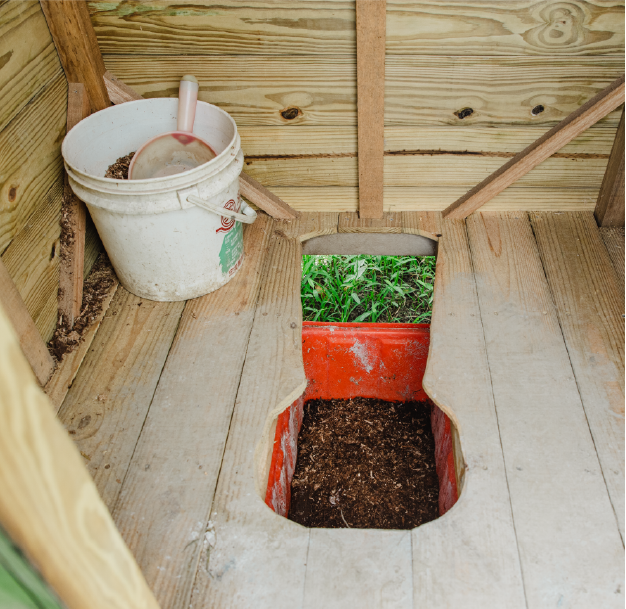
latrine hut
“The Amis people do not consider death a taboo matter but do care much about urine and excrement,” explains Akac Orat. In the past, when there was no toilet, people used to go all the way to the beach in the early morning to relieve themselves. They would do so by dipping themselves in the sea so that they could clean their bottoms conveniently. In this specially designed eco-friendly latrine hut, however, there is neither a toilet nor flushing. What you have to do after using it is cover the sewage with wood shavings to remove the odors.
